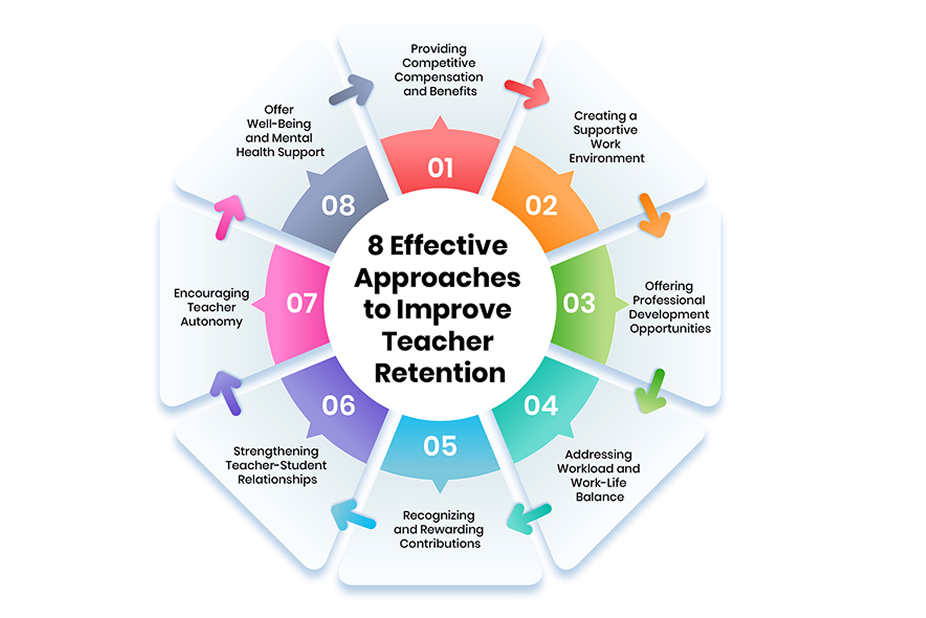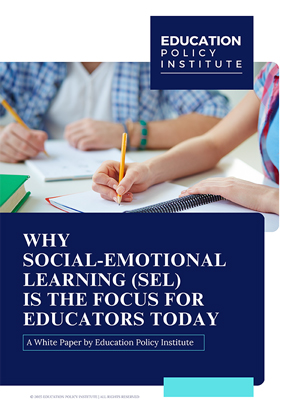Teacher retention is a crucial factor in maintaining a high-quality education system, yet many schools struggle to keep experienced educators. With increasing workloads, limited recognition, and stress-induced burnout, a growing number of teachers are choosing to leave the profession. This trend not only impacts student learning but also places additional pressure on remaining staff and increases recruitment costs for institutions. Losing skilled educators affects school culture, disrupts student-teacher relationships, and limits opportunities for extracurricular activities. Addressing this issue requires a comprehensive approach that goes beyond financial incentives and focuses on creating a supportive, engaging, and fulfilling work environment.
Educational leaders must implement effective strategies to encourage teachers to remain in the profession. Providing professional development, building strong leadership, and ensuring a healthy work-life balance are essential steps in improving retention. Recognizing teachers' contributions, offering mentorship programs, and creating collaborative workspaces can strengthen their commitment to the school community. By prioritizing teacher well-being and engagement, institutions can build a stable workforce that enhances student achievement and upholds the overall quality of education.
Knowing Teacher Retention Better
Teacher retention refers to a school's ability to keep educators in their roles over time, preventing frequent staff turnover. Just like in any profession, teachers may choose to stay in their current positions or seek opportunities elsewhere. However, high turnover rates in schools can disrupt the learning environment, making it essential for institutions to implement strategies that encourage teachers to remain. It can be very well noted that many educators leave within the first few years due to factors like low pay, heavy workloads, and a lack of support. Addressing these challenges requires more than just financial incentives—it involves creating a positive work culture where teachers feel valued and supported.
The impact of teacher turnover goes beyond staffing difficulties. Losing experienced educators affects student learning, school culture, and staff morale. When teachers leave, schools face the financial burden of recruiting and training replacements while also managing disruptions in classrooms. Additionally, remaining staff may experience increased stress as they take on extra responsibilities. Ensuring teacher retention helps maintain stability, improves student outcomes, and builds a strong educational environment. Schools that invest in professional development, mentorship programs, and supportive policies are more likely to retain skilled teachers and create a thriving learning community.
Why Schools Can’t Afford to Lose Good Teachers
The stability of a teaching workforce is crucial for the success of both students and educational institutions. High teacher turnover can disrupt classroom learning, forcing students to constantly adjust to new educators with different teaching styles. Furthermore, when experienced teachers leave, schools lose valuable mentorship opportunities that benefit newer educators.
From an institutional perspective, frequent teacher departures result in financial burdens related to recruitment, training, and onboarding. Morover, the remaining staff may become overburdened with additional duties, resulting in heightened stress and decreased job satisfaction. By prioritizing teacher retention, schools create a more consistent and effective educational environment where both students and teachers thrive.
8 Effective Approaches to Improve Teacher Retention
Retaining skilled teachers is essential for maintaining a high-quality learning environment and ensuring student success. By implementing strategic approaches, schools can create a supportive workplace that motivates educators to stay and thrive in their roles.
Here are few of those strategies:

-
1.Providing Competitive Compensation and Benefits
One of the primary reasons educators leave their roles is inadequate compensation. Schools must offer competitive salaries that reflect the workload and responsibilities of teachers. Additionally, comprehensive benefits, including health insurance, retirement plans, and paid leave, can significantly impact job satisfaction and long-term retention. -
2.Creating a Supportive Work Environment
A positive work culture plays a crucial role in teacher retention. Schools should encourage a collaborative atmosphere where educators feel heard and valued. Providing mentorship programs, peer support, and open communication channels helps teachers navigate challenges and enhances their professional experience. -
3.Offering Professional Development Opportunities
Continuous learning and career growth are vital for teacher satisfaction. Schools should invest in regular training, workshops, and skill enhancement programs that align with educators' career goals. Opportunities for advancement, such as leadership roles or specialization tracks, can also encourage teachers to stay committed to their institution.
Read more - A Guide to Teacher Professional Development -
4.Addressing Workload and Work-Life Balance
Excessive workload and burnout are common reasons for teacher turnover. Schools should implement policies that promote work-life balance, such as manageable class sizes, designated planning time, and reduced administrative burdens. Ensuring that teachers have adequate time for lesson planning and personal well-being can significantly improve retention rates. -
5.Recognizing and Rewarding Contributions
Acknowledging teachers’ hard work and achievements creates job satisfaction and motivation. Schools can implement recognition programs, performance-based incentives, and appreciation events to show gratitude for their educators' dedication. Simple gestures, such as verbal appreciation, awards, or bonuses, can go a long way in making teachers feel valued. -
6. Strengthening Teacher-Student Relationships
Building meaningful relationships with students enhances job fulfillment for teachers. Schools should encourage environments where educators feel supported in cultivating strong connections with their students. When teachers see the impact of their work through student success and engagement, they are more likely to remain committed to their profession. -
7. Encouraging Teacher Autonomy
Allowing teachers to have more control over their teaching methods and classroom decisions increases job satisfaction. Schools should trust educators to implement creative teaching strategies, personalize lesson plans to student needs, and participate in decision-making processes that affect their work. -
8. Offer Well-Being and Mental Health Support
Teaching can be highly demanding, often leading to burnout and stress. Schools should implement well-being initiatives such as counseling services, stress management workshops, and wellness programs. Encouraging a healthy work-life balance through flexible policies and mental health resources can help teachers feel supported and reduce the risk of attrition.
Factors Driving Teachers Away from the Profession
Several factors contribute to teacher attrition, many of which stem from systemic challenges in the education sector. Some of the most common reasons include:
- Low Salaries and Limited Benefits: Insufficient financial compensation forces many teachers to seek higher-paying jobs in other fields.
- High Workload and Burnout: Excessive administrative tasks, large class sizes, and long hours contribute to stress and exhaustion.
- Lack of Support and Resources: A lack of mentorship, inadequate classroom resources, and limited professional development opportunities can lead to dissatisfaction.
- Student Behavioral Challenges: Managing classrooms with students facing social, emotional, and behavioral difficulties can be overwhelming, particularly without proper support systems.
- Limited Career Growth Opportunities: Teachers who feel stuck in their roles without prospects for advancement may choose to explore other career options.
- Impact of External Factors: Events such as pandemics or economic inflations have increased stress levels for teachers, leading many to reconsider their career choices.
Conclusion
Teacher retention is a pressing issue in modern education, requiring a proactive approach from schools and policymakers. By addressing key challenges such as compensation, work conditions, professional growth, and support systems, institutions can create environments where educators feel valued and motivated to continue teaching. Retaining skilled teachers is not just beneficial for schools—it directly impacts student learning, academic success, and the overall quality of education. Schools that invest in their teachers’ well-being and professional growth will ultimately build a stronger, more sustainable educational community.





